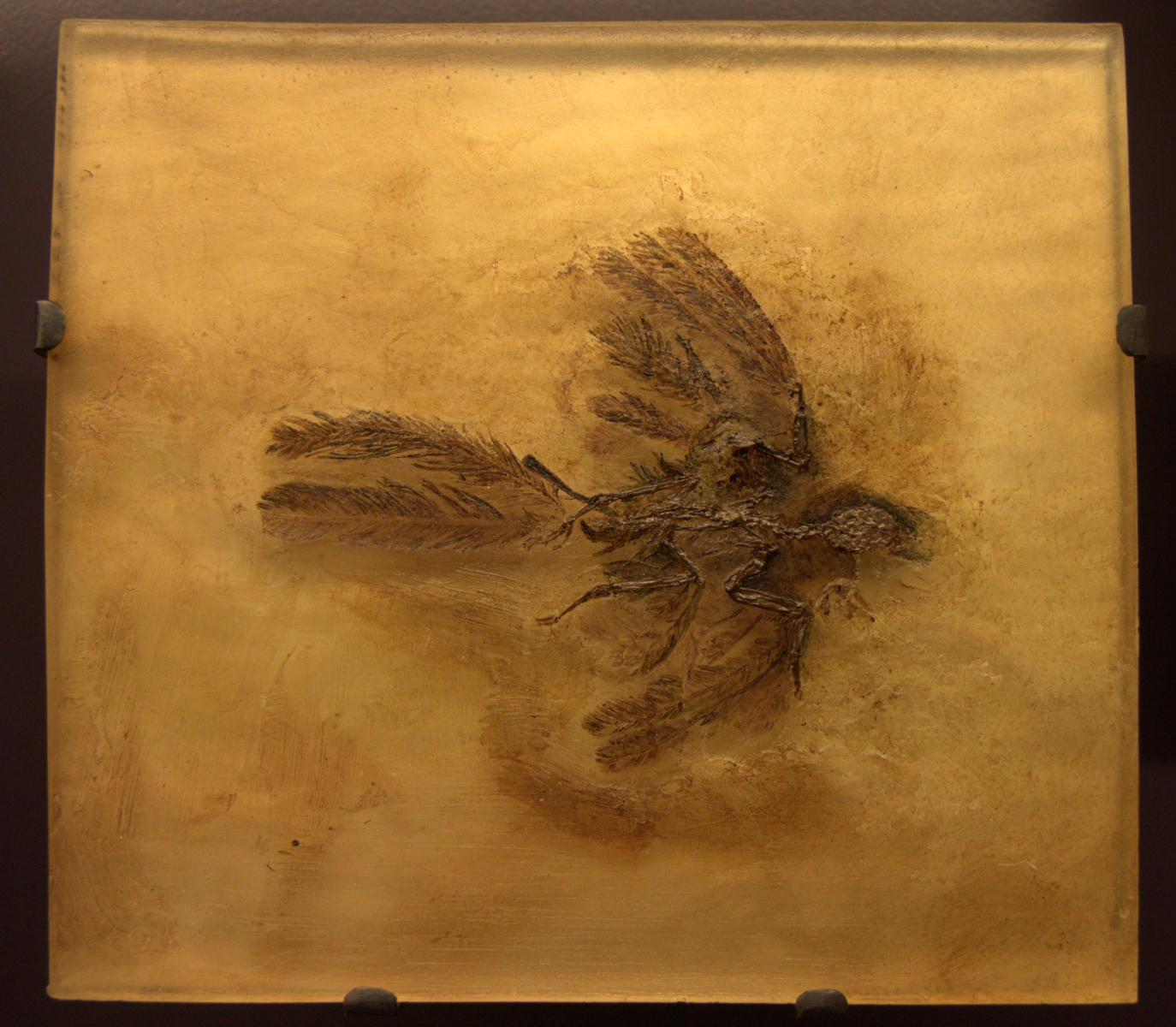Fossil Feathers in Colour - Planet Earth Online
Interview with
Chris - A remarkable paper was published in the journal Science recently. An international team led by Roy Wogelius from the University of Manchester has developed a new technique that reveals the colour, and even chemistry, of fossil birds - birds that are more than 100 million years old.
The team used high-powered X-rays to detect trace metals in the fossils and related these to melanin pigments in modern birds. Unlike other methods, the process doesn't involve damaging the fossils. Planet Earth Podcast presenter, Richard Hollingham, went to meet Roy and see the fossils for himself...
Roy - This is a 50 million year old fossil feather.
Richard - And it's almost perfect. They're very fine, wispy strands.
Roy - This is the kind of thing that we call exceptional preservation. You can see the central shaft and we can see the barbs that fan out from either side. The preservation is absolutely splendid.
 Richard - So this is 50 million years old and you can tell from a fossil with your technique the chemistry and from that perhaps the colour of it?
Richard - So this is 50 million years old and you can tell from a fossil with your technique the chemistry and from that perhaps the colour of it?
Roy - That's exactly right. We know that the pigments in our hair and skin bind up with certain metals: Iron, calcium, zinc and copper. Copper is part of the enzyme that actually makes the pigment in our hair and skin and in bird feathers. So we thought that maybe by mapping the trace metals we could see if there's some kind of information about colouration, indeed maybe the colour that you're seeing, this preserved colour maybe that-
Richard - That's real?
Roy - Yeah, maybe that's real. And indeed what we found is at the base of this feather there are higher concentrations of copper than anywhere else in this sample, much higher than in the sedimentary rock and much higher than in the top portion of the feather. The other thing we're able to do using x-rays is, not just map the copper but also look and get the details of how the copper is chemically bound, what elements surround it. In other words does it look like an organic compound or is it a purely inorganic compound? And the thing that we found absolutely blew me away; the copper chemistry in the base of this feather is nearly identical to the copper chemistry in melanin sampled from existing organisms. And so maybe we should go to the other specimen which is perhaps a bit more exciting.
Richard - It's very well wrapped, in bubble wrap and then tissue paper - let's pull back the tissue paper. Now that is incredible. I suppose it's the size of a large crow that's been flattened.
Roy - Welcome to our 120 million year old road kill. What's amazing about it is that this is the first documented bird with a beak.
Richard - Oh yes! And again on here you've got colour. You've got much darker wings than the bones in here which are almost a bone colour, even though this is a fossil. But, again, how do you know these colours are real?
Roy - What you can see here is that in the neck region and around the body there's this very, very dark colouration-
Richard - Almost black.
Roy - Yeah, that's right, almost like carbon black. And if you look at the flight feathers which are splayed around to either side of the body, the top has this relatively dark black colouration and then as we move away in the flight feathers and go further and further away from the body they get lighter and lighter in colour. And what we find is that in the neck region and body region there's very, very high concentrations of copper. We've also done infrared analyses on these regions and infrared spectra look exactly the same as modern day melanin. We've done structural work and all this information sits together to tell us that the downy body feathers on this bird were very, very rich in this dark black umelanin pigment.
Richard - So this was some sort of black bird?
Roy - That's right, that's exactly right. It's unambiguously non-destructively and over the whole organism we can pull out patterns without having to destroy anything.
Richard - Now this is fascinating - is this useful?
Roy - There are aspects of behaviour and evolution and ecology that were inaccessible to palaeontologists until they could start to see colour patterning. That tells us an awful lot about camouflage, sexual display, a whole different range of behaviours which you really can't get any kind of clue from just bone material, so it's the soft tissue. So for the palaeontologists it's one of the reasons why they're so interested in this. This really might be able to tell them something about behaviour. These trace metals contribute to biochemical pathways, they're still present, we know we can map them and I think this gives us hope that things besides pigmentation actually become available to us as we study ancient life.










Comments
Add a comment